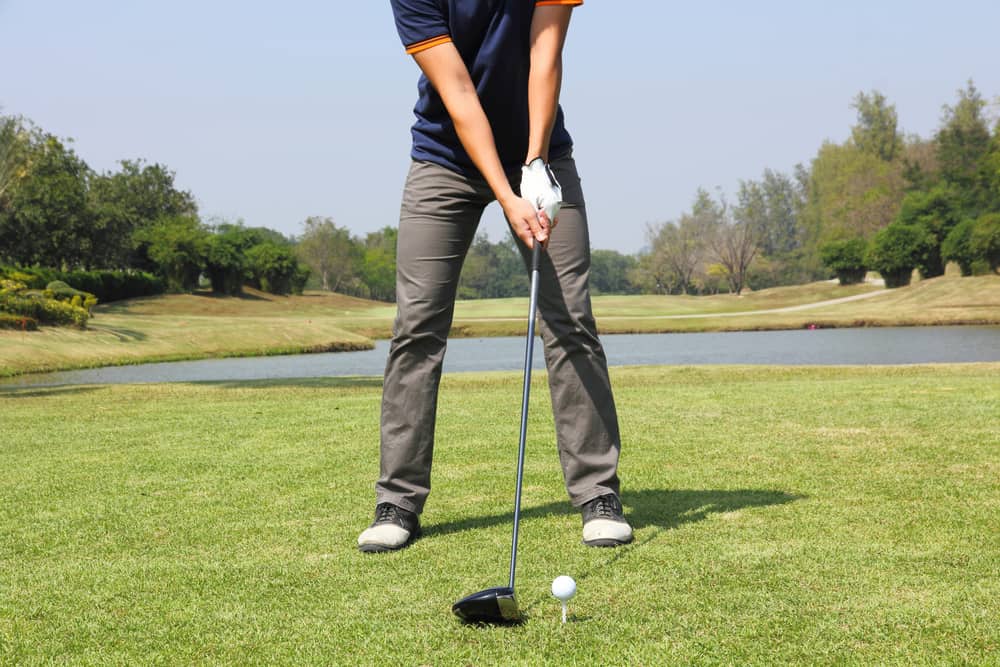
One of the most important fundamentals of the game of golf is the grip.
Golfers who are great players have full confidence in the grip that they have with the club.
Remember that golf is not really even a sport if we don’t have the connection to the club that we need.
Establishing and then perfecting a golf grip is essential.
However, some golfers are confused by the fact that a driver grip and an iron grip can sometimes be different.
In addition, there are putting grips and chipping grips that can confuse things further.
Essentially, there is quite a bit of work that you will need to do to ensure that your grip is perfect throughout your entire game.
Let’s take a look at the driver grip vs. iron grip and everything that you should know.
Driver Grip Vs. Iron Grip (What’s The Difference?)
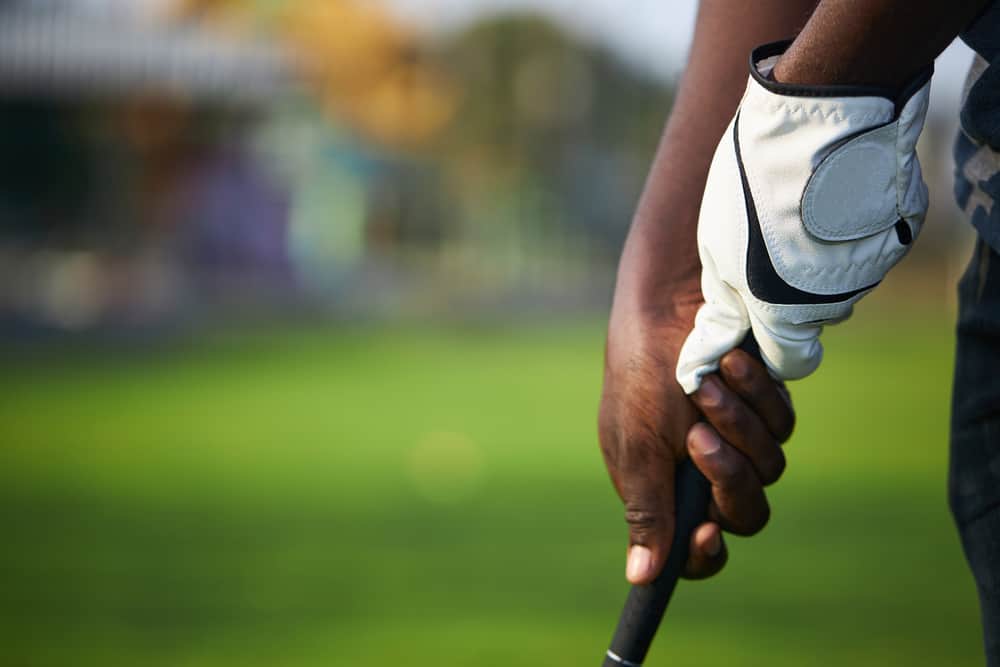
The biggest difference between the iron grip and the driver grip is that players tend to make more accommodations with their hands when gripping a driver.
Overall, the basic golf grip choices are all going to be the same.
However, there are modifications to the standard golf grips that can help to manipulate the ball flight, hit straighter shots, and get more distance.
The driver swing is a bit different from an iron swing.
In addition, the mentality of a golfer about to hit a driver shot is also considerably different from that of one who is about to hit an iron shot.
Many players struggle with a slice off the tee, and this is something that they will try to correct by using a different type of grip.
Golfers who are great at the game will know that the grip from one club to the next (with the exception of a putter) is going to be relatively similar.
Let’s take a look at a few of the key differences or modifications that you will see players make when using the driver as opposed to the irons.
1. Vertical Position Of Hands On Club
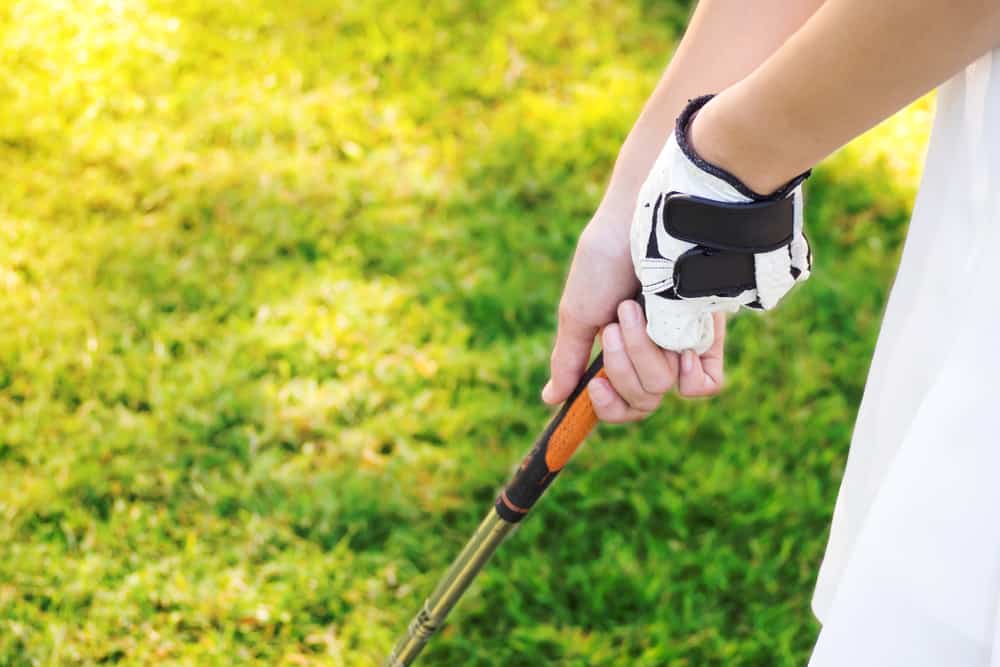
When you grip a golf club, you have several inches of grip to work with.
Some people hold the grip directly at the top, while others will place their hands a bit further down.
Of course, the change of the vertical position of the hands on the club is also going to affect the overall club length.
This is why it is important to choose a position where you feel as though your hands are comfortable but that your overall stance and setup are also comfortable.
The vertical position of the hands on a driver should be as close to the top of the grip as possible.
There are very few reasons to choke up on a driver, simply because it will affect the way that the club performs.
When you have your hands at the top of the club, you can get complete use of the driver and its length.
The driver is the longest club in the bag, and that is what helps us to get the distance that we need on our drives.
If you have your hands in the proper vertical position, you can get plenty of distance and have an easier time hitting the ball straight.
With irons, players tend to hold their hands just a bit further down.
Holding the club further down can sometimes give a bit more control to the shot and allow you to place your iron shot exactly where it needs to be.
Learning to adjust the vertical position of the hands on the golf club, fortunately, is quite easy.
This is something that you can play around with on the range and get your hands to find a comfortable spot that works for you.
If you have golf clubs that are custom fitted to your height, you may find that the grip position stays the same throughout all clubs.
2. Grip Choice (Overlap, Interlock, Ten Finger)
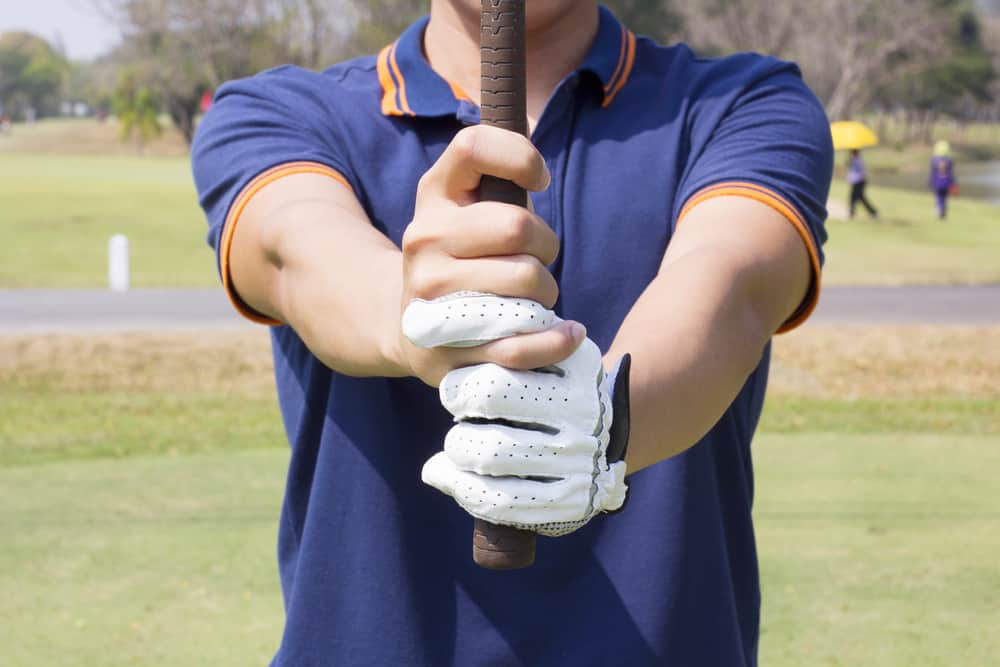
There are three basic grips in the game of golf.
The interlock grip, overlap grip, and the ten-finger grip.
It is essential to choose a grip that is going to match the needs of your game and the size of your fingers.
For most players with smaller hands, the interlocking grip tends to be the best choice.
For those with larger hands and those with pain in their hands, the overlap or ten-finger grip could be the best choice.
Most of the time, when you choose one of these grip styles, you are going to want to use it for both the driver and the iron.
The changing of the grip style from one club to the next could be quite a bit to remember and process.
In addition, although this seems like a minor difference between how the hands are placed on the club, the grip choice will lead to a variety of different swing paths.
This means that you can change the entire course and direction of your swing by making a simple adjustment to the grip, so it makes sense to keep things rather consistent when you look at the overall grip style.
The amount of change between these is too significant to make it an intelligent choice to be changing in the middle of your round.
3. Position Of Left Hand
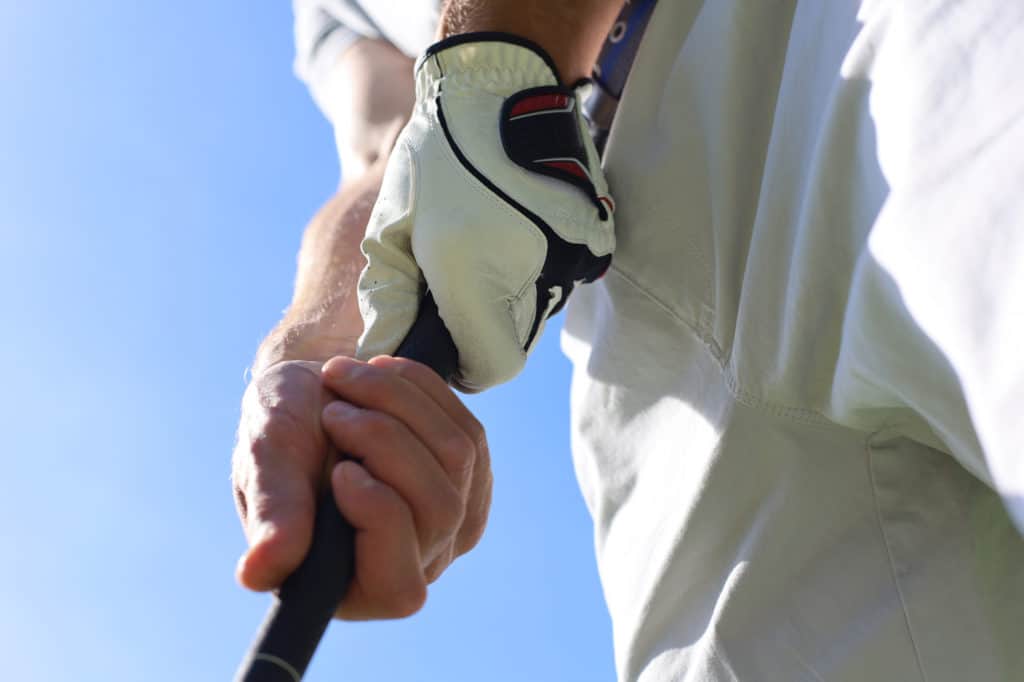
The position of the left hand is very likely the most common thing you will see change from a driver swing to an iron swing.
There is no denying the fact that many golfers slice the ball with their driver.
The driver is the longest club in the bag, and it can cause the most issues for players.
Many golfers don’t have the club head speed or the skill to learn to release the ball and hit a straight drive.
Therefore, they will make accommodations in their swing and in their golf grip to help improve the position of the left hand and hit the ball straighter.
When the left hand is turned a bit more to the left with the thumb more towards the top of the grip, the grip will be weaker.
A weak grip makes it difficult to hit a golf shot with the club face closed.
In fact, most of the time, the weak grip is going to lead to a more open clubface at impact.
This is a good thing for those who hook the ball, although the hook is not the most common miss in the game.
For golfers who slice the ball, the left hand tends to be turned towards the right.
This then allows for the right hand (for a right-handed player) to get a bit more on the underside of the club.
This positioning of the right hand encourages the player to turn the club over and release it as they get through the impact position.
Essentially, you will give your right hand a more active role in the golf swing, allowing it to help you hit the ball straight.
However, since golf irons are not as long as a driver and not nearly as difficult to control, golfers tend to have an easier time hitting their golf irons straight.
This means that if they take the same grip position for the driver and put it on the iron, they may start hitting the ball too far left.
This is why many golfers will slightly adjust the position of their hands when switching from a driver to an iron.
It is not wrong to do this, but the problem is that it creates some inconsistency in your game that you will have to be aware of.
If you are not smart about being a consistent golfer, there are times when you could end up struggling to know which grip is right, and it can really get in your head.
4. Overall Pressure Of The Grip
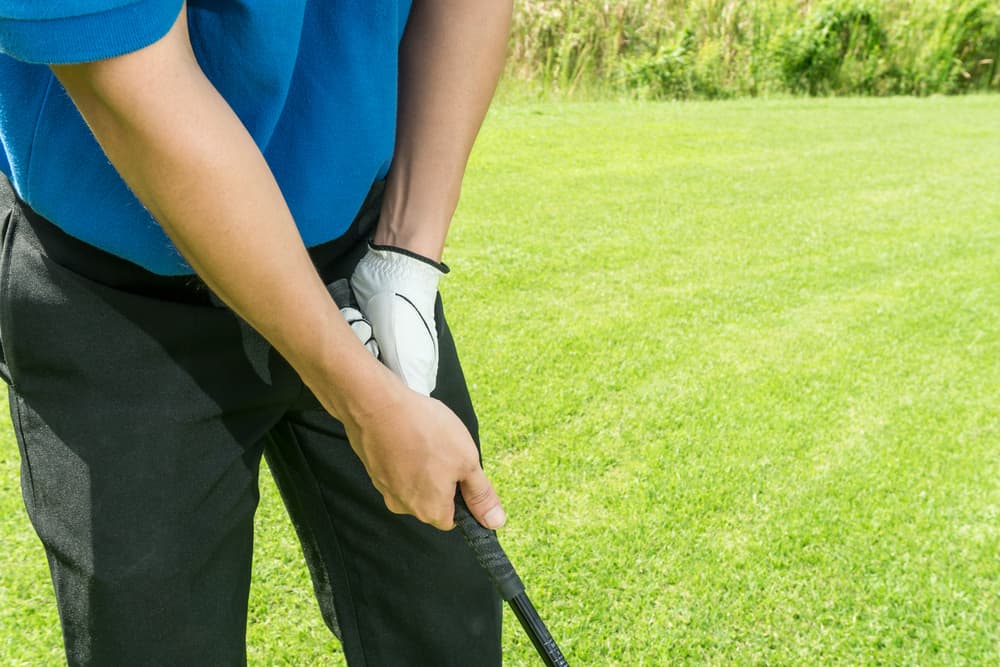
Most amateur golfers confuse grip pressure and power in the swing.
The grip pressure for your clubs should be relatively consistent throughout the entire game.
If you are smart about grip pressure, you will have your hands feeling comfortable on the golf club and never squeezing it too hard.
At the same time, you will have control over the club, and it won’t feel too loose in your hands.
Overall, the grip pressure of the golf club is going to be something that people will change as they swing a driver or an iron.
Drivers tend to make people grip the club really hard.
They feel as though the extra grip pressure will help them hit the club further.
This is not the case, and in fact, it can make it so that you don’t hit the ball as far as you could.
Golfers should instead try gripping the club lightly throughout the entire game.
If you are a player who grips the club hard, make sure that you are keeping the pressure consistent between your drivers and your irons.
If there is any change in pressure at all, ensure that it is minimal, or there could be issues with your ability to hit straight and consistent drives.
5. Physical Grip Choices/Style
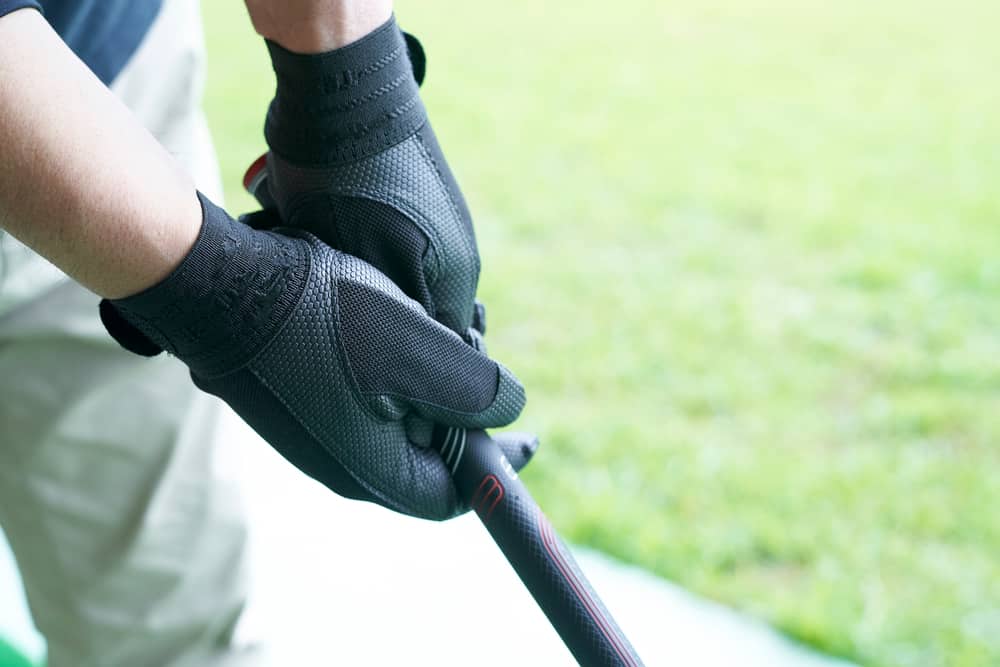
Another factor to consider when looking at the driver grip vs. iron grip is the actual grip that is put on a club.
There are hundreds of different grip styles on the market, ranging from midsize or jumbo grips to undersize grips.
In addition, there are different grip textures that you can choose from as well.
The softer textures can be good for arthritis, and tacky textures will allow golfers to have a better connection with the golf club in their hands.
Overall, the physical grip choice is quite important and something that should be considered from the driver to iron.
Most great players will tell you that choosing a grip that is the same across all of your clubs is the best decision that you could make.
However, most players don’t do this.
Most play with the grips that their clubs come with, and when they need to be replaced, they put whatever they can find on the golf club.
This is a mistake that you should avoid if you can.
Having consistency in the grip choices is very important.
In the game of golf, there are so many things changing from one hole to the next that it is essential to ensure that you have consistency in as many things as you can.
For golfers who have a hard time releasing their driver and hitting it straight, ensure that the grip on the club is not too big for their hands.
If you have been playing with different grip choices, you will want them to be the same size when switching from one club to the next.
Remember that the grip is our only connection with the golf club, so if it is not secure on the club, don’t expect the results to be all that great.
Should A Driver Grip And Iron Grip Be Different?
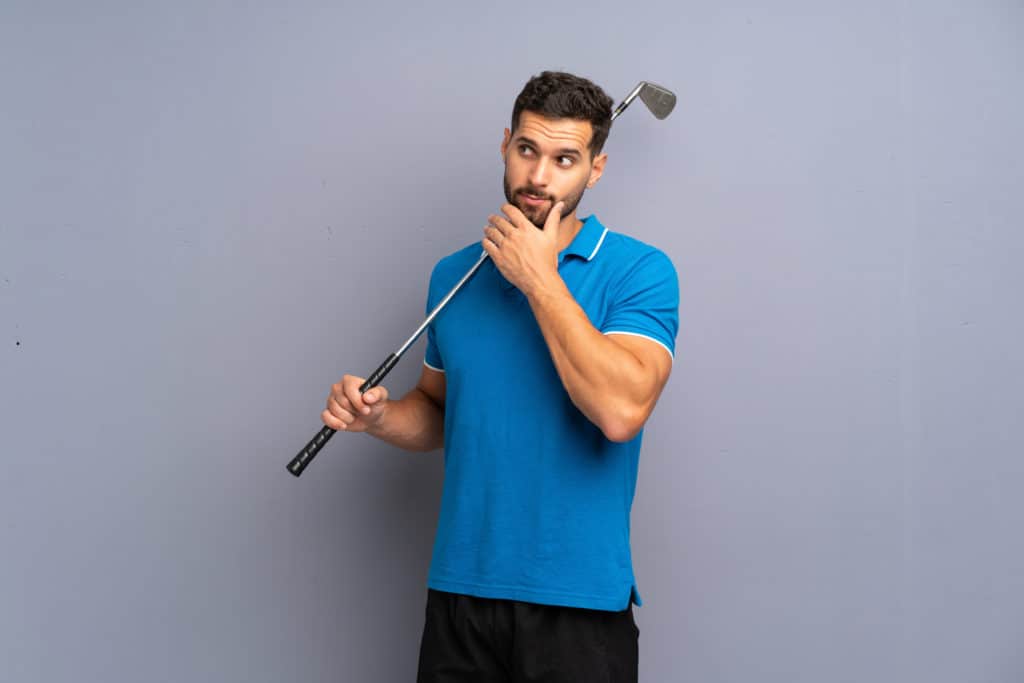
Now that you know the main differences between the way people grip the driver and the iron, it makes sense to look into whether or not this is a good idea.
Does it make sense for people to grip the club in two different ways?
If you talk to golf professionals and experts on the game, they will likely explain to you that it is best to be as consistent as possible when gripping a driver and an iron.
There is really no need to use a variety of golf grips because they are going to make the game more complicated than it needs to be.
The variations that you will experience in golf include the weather, the course, your physical condition for the day, and more.
Does it really make sense to add in even more variations that are going to have an impact on your overall scoring on the hole?
The answer is no.
The best thing that you can do is learn the fundamentals necessary to hit a golf ball straight.
If those fundamentals are a bit different from the tee box than they are from the middle of the fairway, that is entirely understandable.
The point is that you will want to learn what it takes to hit a great golf shot without having to change your grip.
The minute you have to make accommodations in the grip style and position, the greater your chances are for inconsistency in the shot that you hit.
If you want the best players in the world, you will quickly notice that their golf games are consistent.
If you have the option to grip the club the same for drivers and irons, go ahead and do so, and then work out any swing flaws from that point.
In the end, the best players will be very set in their golf grip choices, and it will remain consistent.
Is A Putting Grip The Same As A Driver Or Iron Grip?
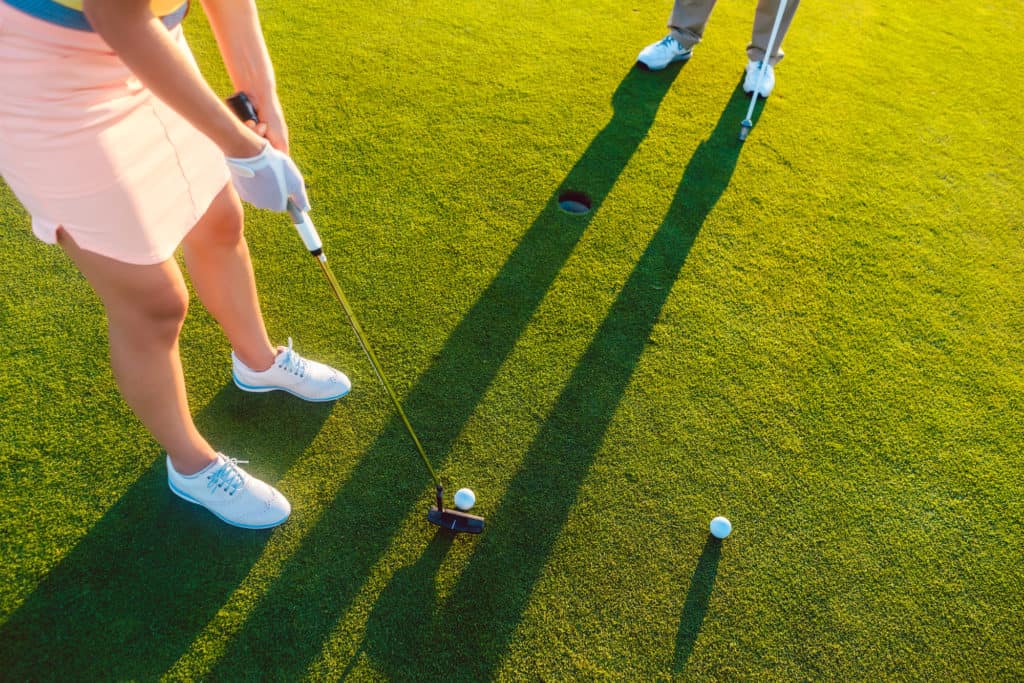
Putting is the area of the game that allows for the most variation in the grip.
If you want to grip your putter entirely differently, you should.
The way golfers swing a putter is entirely different, and therefore, it really does not matter if you would like to change up the grip.
Most professional golfers will use a grip that keeps their hands and their putter head steady so that they can repeat their putting stroke.
This is often a bit different than the standard overlap, interlock, or ten-finger grip.
However, when putting, this is entirely acceptable.
Find something that works for your putting stroke and feels comfortable.
Only then will you be able to start rolling down the putts that you need and getting the ball closer to the hole.
Conclusion
Hopefully, you can now see all that is involved with a driver grip and an iron grip.
There is no reason to overcomplicate the issue of drivers and irons being different.
Simply choose a golf grip that feels comfortable for you throughout your game, and then learn how to play each club accordingly.
Overall, there is no perfect golf grip, simply one that works well for your individual needs as a golfer.
The more you practice and play, the more you will see that consistency in the way the club feels in your hands is one of the most critical factors in the game.
Do yourself a favor and don’t overcomplicate what you need to do with your hands on the club.

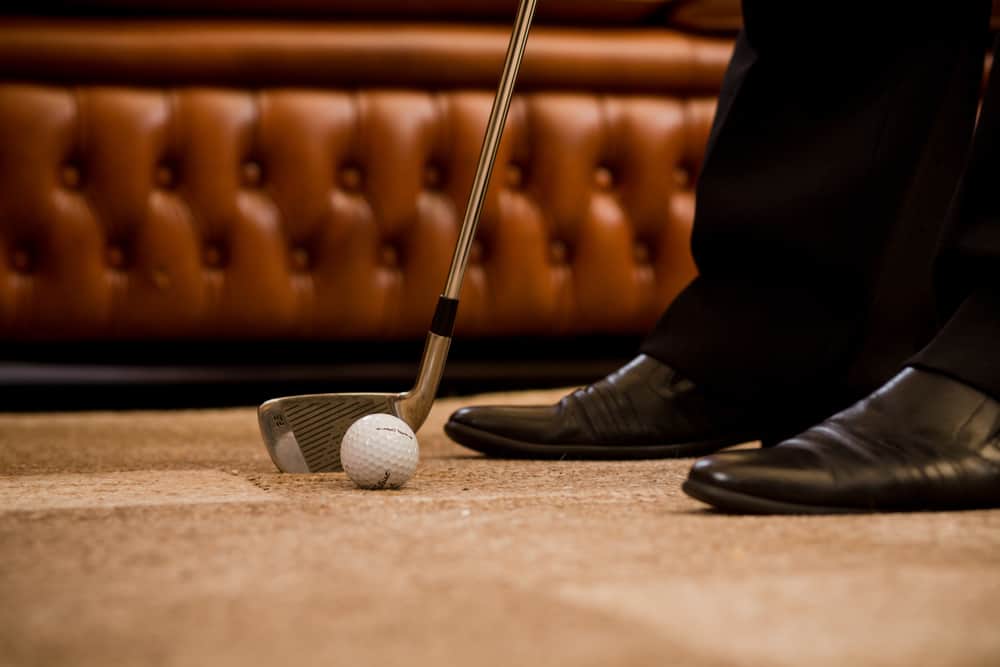

Leave a Reply